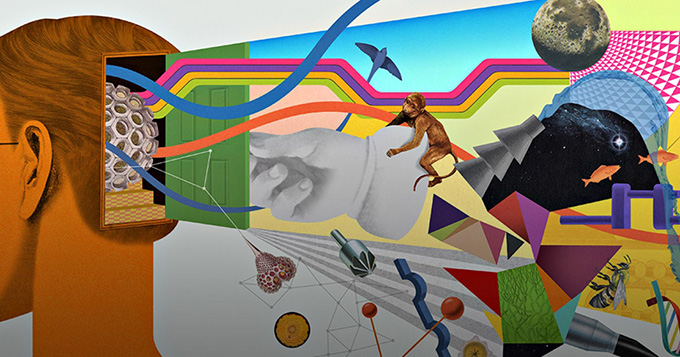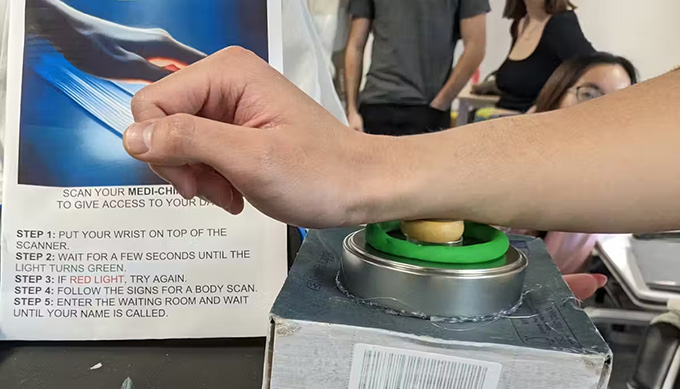
More and more companies are recruiting scriptwriters and designers in “design fiction,” an immersive method that uses science fiction to project potential futures. How are schools and universities adapting to this trend?
“Design of fictions”, “creation of prototypes”, “ability to mobilize imaginations to glimpse desirable futures”: these are the new skills sought by Hermès, Matmut and the Normandy Region. From interns to management positions, job offers in “design fiction” are multiplying. Their missions? Create stories and prototypes to support the cultural as well as functional transformation of companies.
These offers are all weak signals of a battle of the imagination that is taking shape and for which everyone is trying to recruit into their ranks. Among the first organizations to launch: the army.
Indeed, working as a cartoonist and being subject to defense secrecy is the situation experienced by the scriptwriters and designers recruited by the French army in the Red Team Defense, its design fiction team. This initiative launched in 2019 by the Defense Innovation Agency under the responsibility of the General Directorate of Armament brings together military personnel, science fiction authors and scientific experts to imagine future threats to France.
Some of these scenarios are presented through an interactive site , contributing to the occupation of the space of the imaginary in collective thought. Thus, the third season proposes to immerse oneself in a futuristic world in which “a new technology of instantaneous acquisition of knowledge challenges the distinction between expert and non-expert. The military use of this neural implant changes the art of war forever.”
The term “design fiction” was widely popularized by Anthony Dunne, professor of design at the Royal College of Art in London, and Fiona Raby, professor of industrial design at the University of Applied Arts in Vienna in their book Speculative Everything: Design, Dreaming, and Social Dreaming . For the past ten years, design fiction has been spreading to the general public, helping to prepare imaginations, develop critical thinking or open up perspectives for innovation.
But as demand for these skills skyrockets, how is higher education actually preparing students to meet these new needs?
Science fiction as a source of innovation
In an attempt to answer the question: “How will we eat in 30 years?”, designer Nick Foster , head of design for Google X, materializes the future through a box of cereal made from insect flour: “Cricket Crunch” , a banal food in this scenario. This simple object becomes a symbol of a possible future, integrating clues about changes in society, consumption and geopolitics.
At the crossroads of science fiction and design, “design fiction” allows us to project ourselves into a future daily life based on speculative objects. For several decades now, science fiction has been fueling the research projects of large companies. In 1979, the British Arthur C. Clarke recounts in his book The Fountains of Paradise how a bridge design engineer invented a space elevator, which would become a source of inspiration in the work of the European Space Agency .
In 1968, Stanley Kubrick depicted astronauts eating their meals by swiping on touchscreen tablets in “2001: A Space Odyssey .” Did Kubrick invent the iPad? That’s what Samsung argued in 2011, when the company released its own tablet and Apple sued it in the US for copying. In vain. Samsung lost. But while a work of science fiction may not seem to constitute proof of anteriority, it can nevertheless embody an entire future world.
New training courses
Within innovation and transformation cells, design fiction skills are increasingly sought after. But few organizations offer such training. Among them, Singularity University : this very special university was founded in 2009 in the United States, on a NASA site, by representatives of the tech giants.
Beyond this very particular example that underlies a transhumanist vision of the future, training managers in anticipation is neglected. Certainly, many universities and business schools offer programs in innovation management, but the teaching of foresight remains based on representations of the world, theoretical models and practical applications that are now to be re-explored.
These different changes can be materialized through a key artifact of higher education: the syllabus. This is reflected at three levels: the course prerequisites, the theoretical models used and the students’ productions as a final exam.
As a prerequisite for the course, teachers require a “sci-fi” culture. Thus, new prerequisites appear: analyzing the film “Dune 2” or studying the book by the writer Alain Damasio, “Vallée du Silicium”, in which he questions in turn the proliferation of AI, the art of coding and metaverses, autonomous cars or the future of our bodies, to draw out a political reading of the time.
During the course, the choice of theoretical models used changes. Developing representations of the future is an integral part of the strategy and innovation of companies. We can distinguish different approaches:
- forecasting extrapolates trends through quantitative approaches and simulations to establish a probable future;
- foresight describes possible futures in the form of scenarios where experts vary the parameters that they believe can be varied, with the caution dictated by scientific consolidation;
- Strategic monitoring detects early weak signals announcing ruptures, opening the way to plausible futures, between probable and possible.
Multiple futures?
Design fiction offers an alternative that integrates creativity with scientific rigor. One of its key tools is the cone of futures.
The cone of futures suggests that the future is not linear, but composed of multiple possible scenarios (probable, plausible, possible) that expand as we move forward in time. From these, teams seek to identify and construct a desirable future.
This approach , visualized as nested three-dimensional cones, was developed iteratively by foresight experts and researchers: Charles Taylor in 1990, Trevor Hancock and Clement Bezold in 1994, and Joseph Voros in the 2000s.
To embody these different futures, to activate the emotions and reflection of individuals, it is essential to bring them to life. Two educational devices are therefore worked on with the students: narration and the production of artifacts.
In the design fiction classes at Grenoble École de Management, students write and record stories about a daily life of the future. Thus, on the theme: “What would a day in the life of a student in Grenoble be like in 2050?”, questions about the integration of technologies, particularly from the IRT Nanoelec Technological Research Institute , reflections on the future of Alpine ski resorts and all the elements previously worked on with the ecosystem of partners are integrated into a radio news program of the future. This allows us to report on the imagined lifestyle through the various weather, political, cultural and social chronicles.
The students proceed in the same way as the (not so) offbeat fictions of the show La Préhistoire du Futur on France Culture, in which the scriptwriters imagine how technologies and societal trends could evolve. For example, what would happen if we understood the language of dolphins? If robots went on strike?
Finally, students must embody this future daily life through an artifact. They therefore prototype, in places such as fab labs or creative third places, an object of the future. These diegetic objects have the capacity to tell this world, this story. These student works are sometimes presented in cabinets of curiosities that archaeologists of the future could analyze.

Artifact production by students during a design fiction seminar. The goal was to think about “How to take care of yourself in 30 years?” In a future where health is monitored by the state, each individual scans themselves regularly to identify their state of health and check the additional tests to be carried out. The state considers that this minimum level is required to guarantee the well-being of the population. The artifact created is a detection and update terminal that reads a subcutaneous chip. Provided by the author
This is reminiscent of the way Swiss designer Nicolas Nova lists 5G antenna trees, robot dogs, cultured meat and even artificial lawns as technofossils that society is producing in his “Bestiary of the Anthropocene” .
Like this manual which confronts imaginations with current practices through critical reflection, the teaching of design fiction does not just stimulate creativity, it also seeks to make future managers responsible for the role they will be called upon to play in this battle of imaginations.
Author Bios: Helen Michel is Lecturer-Researcher – Gamification & Innovation and Sylvie Blanco is Professor of Technology and Innovation Management at GEM, Co-Director of the Training Program at the Nanoelec Technological Research Institute both at Grenoble École de Management (GEM)
